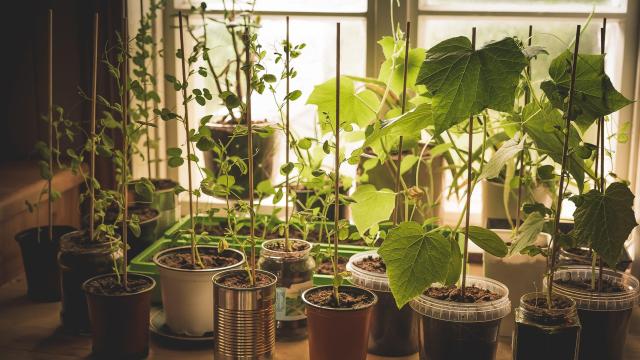Growing vegetables indoors takes some finesse, but is entirely possible. It’s even doable for beginners, if you’re willing to do a little research (and maybe practice on a couple of houseplants first); and if you’re an intermediate gardener, well, what are you waiting for? It’s time to take on the challenge of growing an indoor garden.
What you need to start an indoor garden
The list of supplies is more extensive than your average garden as you’ll need to compensate for what would naturally happen outdoors, including the right soil, drainage, light, and airflow. The things you’ll need includes:
- Grow lights
- Potting soil
- Containers to propagate seeds
- Planter pots with drainage holes (for any store-bought vegetable plants)
- Grow lamps (optional, but highly recommended)
- Planting sticks and galvanised wire (for plant training)
- Plant labels
- and a humidifier (optional)
What plants to grow in your indoor garden
You probably want to pick the easiest vegetables, especially if this is your first try at growing a garden indoors. A beginner’s indoor garden isn’t time to see if you can grow something like muskmelon. Instead, focus on lower-maintenance plants like tomatoes, peppers, and dwarf citrus that love warm weather, or cool-tolerant veggies like mustard greens, broccoli, beets, and kale. And, of course, herbs like rosemary, thyme, sage, and oregano thrive as indoor plants (here’s our quick guide on growing an herb garden, because you deserve one).
How to get started on your indoor vegetable garden
If you’re beginning with seeds, you’ll start with the small containers and potting soil, planting your seeds as directed on the seed packet. Once your seeds have sprouted enough leaves, re-pot the plants accordingly.
But once the obvious part is out of the way, you’ll need to be more thoughtful about where to put them — your now-sprouted greens will need to be organised around your house based on the climate and light they need. Most vegetables need about 4-6 hours of light, so keep that in mind whether you’re using natural lights or grow lights.
Additionally, take into consideration the climate your plants need. The cool-climate plants like kale and broccoli don’t need to be in direct sunlight and heat, so put them somewhere cool. For warm-loving plants, the winter months can be challenging, and is when a humidifier can be helpful. A simple oscillating fan can also be helpful.
Of course, remember to water as recommended and fertilize in the growing months based on the specific types of veggies you’re growing. In general, University of Florida Gardening Solutions says that “a balanced fertiliser is applied every three to four weeks throughout the growing season. Don’t stop applications when fruit appears — continue to apply fertiliser as needed to ensure continued production.” Once your plants produce vegetables, they’re ready for harvest, and you can pat yourself on the back. You did it. Now try that muskmelon next.

Leave a Reply
You must be logged in to post a comment.